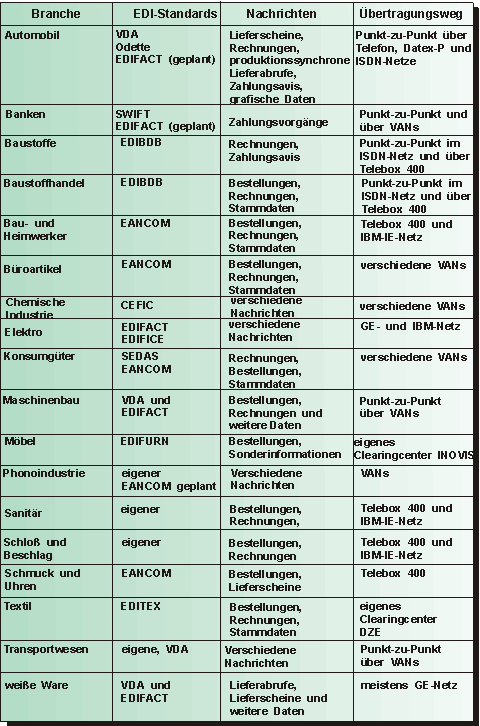electronic data interchange (OSI) (EDI)
Electronic Data Interchange (EDI) is generally understood to mean the electronic transmission of business data. The aim of EDI is to enable communication with which business processes can be controlled across company boundaries. EDI is intended to replace the numerous paper documents such as purchase orders, confirmations, orders, invoices, delivery bills, etc. that are generated during a business process. EDI stands for electronic document exchange with formatted structures that can be further processed in computing systems.
The contents of an EDI message must be formatted in such a way that computers from other companies can continue to use them. Due to the use of standardized data formats, both the software solutions used by the communication partners and the hardware platforms can come from different manufacturers. Since the data is exchanged exclusively in standardized formats, each company only has to map its in-house format once into the standard data format used, e.g. EDIFACT.
EDI can speed up the flow of transactions between business partners by replacing conventional paper-based work in order processing and accounting. EDI automates business activities and accelerates cross-company processes. The benefits of EDI can only be fully realized when all companies have a sufficient level of integration of EDI software, so that business processes require much less work.
In practice, the various EDI implementations are divided into, depending on the level and depth of integration sought: Stand-alone EDI, Integrated EDI and Full EDI.
In stand-alone EDI, the electronic data exchange is not integrated into any internal processes of the company or into the main computer system. With Integrated EDI, the application systems of the two communication partners are interconnected. Information generated by one of the two business partners is transferred to the application system of the other business partner. Full EDI is when, beyond the integration of the company's internal applications with EDI, the company's internal processes are optimized and adapted to the EDI requirements.
Electronic data interchange (EDI) is increasingly being replaced by Extensible Markup Language(XML) and web services.

